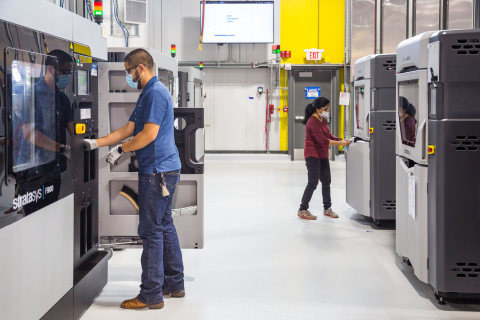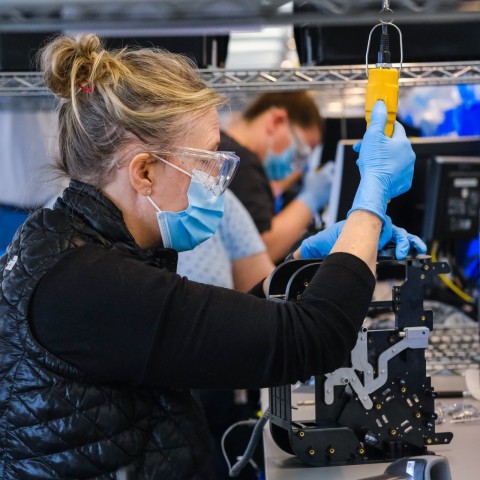Automotive manufacturer General Motors (GM) has added 17 Stratasys FDM 3D printers to its already extensive fleet, citing “speed, weight reduction, and cost efficiency” as key advantages of the technology.
The news precedes an update from Stratasys on the companies most recent financial performance that is due tomorrow.
Ron Daul, Director of Additive Manufacturing at GM, states: “With the pace of change in modern industry accelerating and business uncertainty increasing, 3D printing technology is helping us meet these challenges and become more nimble as a company. Additive manufacturing is consistently providing us more rapid and efficient product development, tooling and assembly aids, with even more benefits to come.”

GM and AM
GM began working with additive manufacturing in 1989 when it started using the technology for low-level prototyping. Decades on, the company now has 3D printers installed in many of its production facilities around the globe. It has also since trained over 700 of its employees to use 3D printing technology.
GM’s approach is indicative of a wider trend with an April 2020 study by SME Media noting a quarter of U.S. manufacturers had plans to change or add to their supply chains in some way. Of eleven technology choices, 3D printing (along with robotics) was the top choice. The results indicate that manufacturing professionals may really be starting to see additive’s potential in everything from prototypes to end-use components and tooling.
Rich Garrity, President of Stratasys Americas, said, “GM is making smart investments in 3D printing to succeed in this new normal of uncertainty and disruption. As a result, GM has manufacturing lines that are more adaptable and less expensive, and products that are developed faster and better. They are a clear model for the future of additive manufacturing in the automotive industry.”
COVID challenges
GM’s move to tooling was really put to the test in April when the company signed a contract with the U.S. Department of Health and Human Services to produce and deliver 30,000 critical care ventilators by September. The company first reverse-engineered part data for tooling fixtures from the original manufacturer. The very next day, GM put its Stratasys FDM farm to work, 3D printing the tooling necessary to manufacture the ventilators.
The automotive manufacturer claims that material innovation and machine repeatability have made a huge difference in the success of its ongoing project. It has employed Nylon12 Carbon Fiber (35%wt) for some of its fixtures, a composite with a remarkably high strength-to-weight ratio. As a result, heavy-duty parts that would usually require metal can now be 3D printed with a polymer filament at a fraction of the time and cost. This, of course, is aided greatly by the dimensional precision and consistency of production-grade printers like the Stratasys F900.

Following GM’s philosophy, metals specialist Tecalum Industrial attributed major time and cost savings to its new 3D printed tooling earlier this year. By integrating 3D printing into its daily operations, Tecalum was able to fabricate many of its jigs and fixtures in-house, eliminating the need for any third-party services.
Elsewhere, metal additive manufacturing service provider Amaero entered into a partnership with an unnamed automotive manufacturer to jointly develop 3D printed tooling. Specifically, Amaero will be creating steel inserts for two aluminum casting die components in a bid to decrease the risk of manufacturing defects.
Subscribe to the 3D Printing Industry newsletter for the latest news in additive manufacturing. You can also stay connected by following us on Twitter and liking us on Facebook.
Looking for a career in additive manufacturing? Visit 3D Printing Jobs for a selection of roles in the industry.
Featured image shows GM additive manufacturing team members working at the still-under-construction Additive Innovation Center. Photo via GM.


